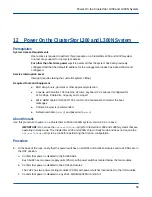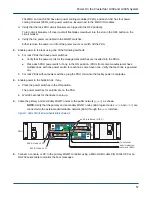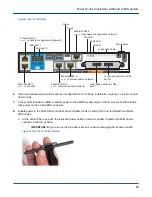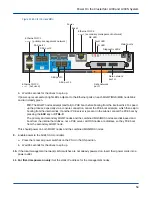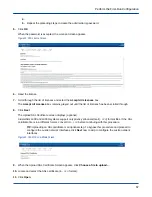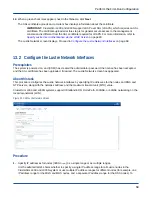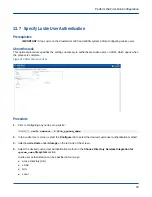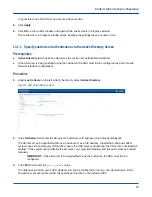
Some of the procedures require root system access. Contact Cray Support to acquire root access, if needed.
"Expected and actual interface addresses differ, possibly some addresses are already in
use" error.
This error is returned after entering network settings and selecting Next.
1. The most likely cause is an error in the data entered on this screen. Either a typo was entered or some
addresses from the pool being assigned are in use.
2.
3. Return to
Configure the Lustre Network Interfaces
on page 68 and re-enter the data, making certain it is
correct.
4. If re-entering the data does not work, either change pools or change the interface addresses for the existing
nodes.
Multiple ranges are supported, and it is possible to exclude conflicting addresses from the range.
CSM hangs for longer than 15 minutes while applying network settings
This hang up has many possible causes, because many backend tools and scripts are involved. To investigate:
1. Run the
ps
command to determine the process ID (PID) of the
beSystemNetConfig.sh
script.
[MGMT0]$
ps aux | grep beSystem
This command returns a list of currently running processes with a name matching the pattern.
2. Check the status of the
beSystemNetConfig.sh
script:
[MGMT0]$
watch pstree -la PID
Observe if any of the output changes. If the script hangs on the same step for more than 2-3 minutes, several
options are possible:
●
If the script hangs on OST mount, check the network by pinging all IP addresses assigned to the cluster
from all hosts (e.g., make certain that the OSS node can be pinged from the MGS IP and vice-versa).
●
If it is a network issue, make certain all cabling and switches are installed correctly.
If the network looks fine, go to the node hosting the OST and run:
[nxxx]$
dmesg | tail -50
This lists any kernel errors. If there are no errors related to the OST mount, go to the next step.
●
Examine the
/proc/mdstat
file:
[nxxx]$
cat /proc/mdstat
Verify that the corresponding MD device is present. If the device is not present, check
dmesg
for
mdraid
assembling problems. Most likely, one of the drives needed for this has failed and must be replaced.
Some of these procedures require root system access. Contact Cray Support to acquire root access, if
needed.
1. Show the location of the problem array assembly:
Perform the First-Run Configuration
70

